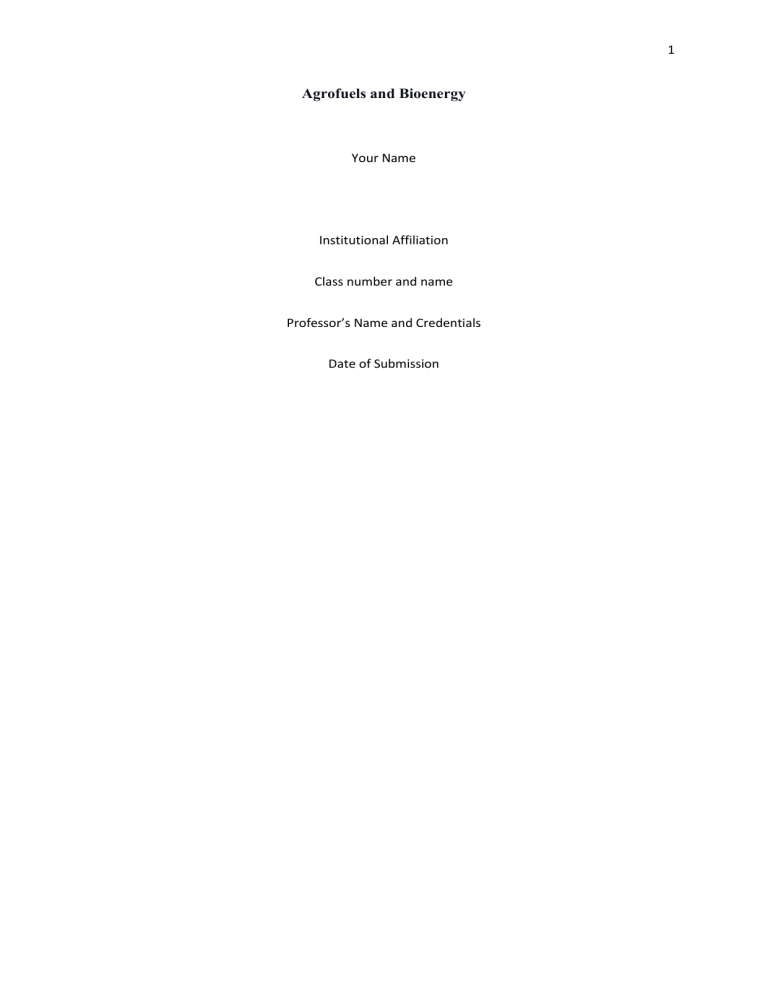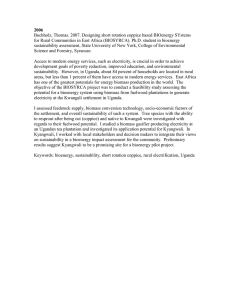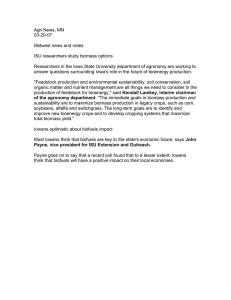
1 Agrofuels and Bioenergy Your Name Institutional Affiliation Class number and name Professor’s Name and Credentials Date of Submission 2 Efforts to retort to climate change are varying the mode the energy division develops and the augmented drive of the Paris Agreement on climate 2015. The measures have been the utilization of agrofuels and bioenergy (Oberthür & Groen, 2018). Agrofuels are fuels that are derived from plants. They form the bulk source of bioenergy- energy derivative from biological sources. Agrofuels and bioenergy are preferred to other energy sources such as petroleum due to their abundant merits by many governments. They are alternative fuels that replace or supplement traditional fossil fuels. Agrofuels have a lower carbon emission which contributes to a clean environment. The shift to agrofuels and bioenergy has led to the creation of numerous jobs. The utilization of Bioresources for sustainable Biofuels and bioenergy has markedly increased globally, thus creating a huge market for agrofuels. The countries without fossil fuel sources have embraced the production of bioenergy because it has brought economic security to them. These merits have made agrofuels widely acceptable to the public, industries, and government policies (Anawar & Strezov2018). Agrofuels are used in bioenergy to produce energy. Transportation, heating, and power are all possible uses for fuel. The primary benefit of bioenergy is to create power. Biomass is burnt to generate steam, then used to power turbines and generators, resulting in energy generation. The use of bioenergy to produce power protects the planet from the looming consequences of global warming. The main problems facing biomass are its availability and economic feasibility. In many regions, biomass is abundant but not easy to transport to power plants. For example, in the U.S., the Corn Belt has many farmers and feedstock for ethanol production. However, the transportation of biomass is an issue due to its bulky nature and frequent breakdowns of trucks and trains carrying biomass, causing costly delays (Mohamed,2020). 3 To summarize, agrofuels and bioenergy are important steps toward achieving a carbon-free future. As a result, the debate offers an in-depth examination of agrofuels and bio-energy. Hence, be utilized to achieve carbon neutrality and combat the looming threat of global warming. 4 References Mohamed, N. N. (2020). Agriculture in Energy. In Energy in Agriculture Under Climate Change (pp. 19-26). Springer, Cham. Anawar, H. M., & Strezov, V. (2018). Mutual effects of climate change and energy crops and their controls on biomass and bioenergy production. In Renewable Energy Systems from Biomass (pp. 75-88). CRC Press. Oberthür, S., & Groen, L. (2018). Explaining goal achievement in international negotiations: the EU and the Paris Agreement on climate change. Journal of European Public Policy, 25(5), 708-727.





